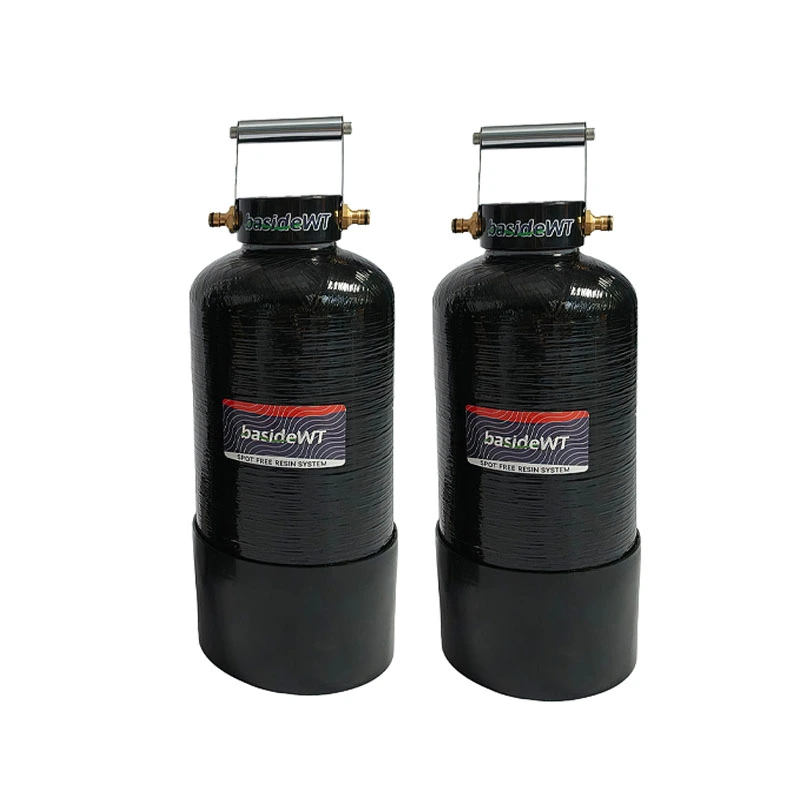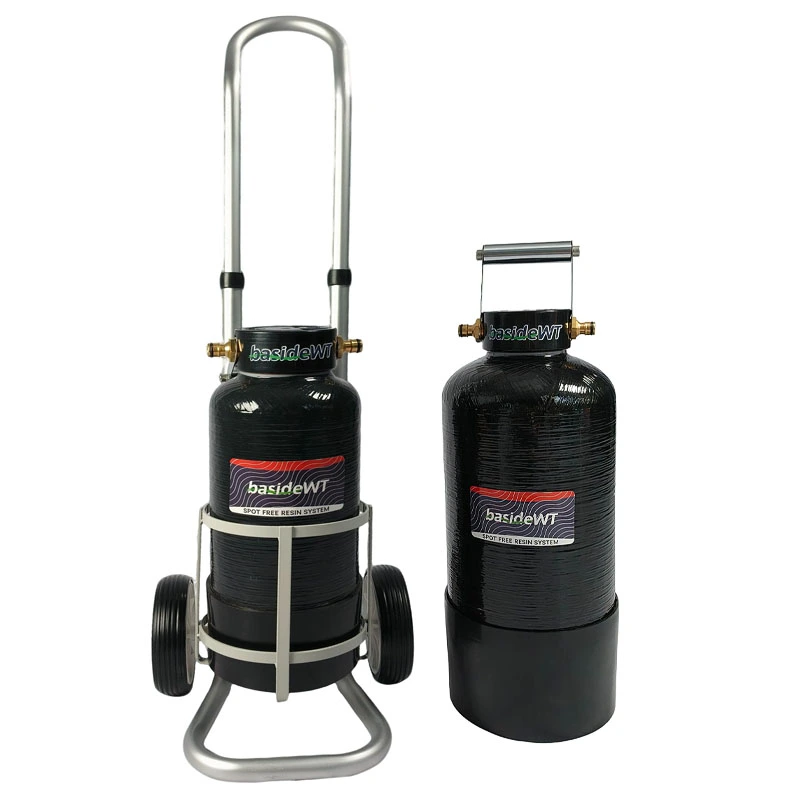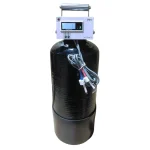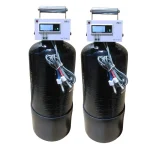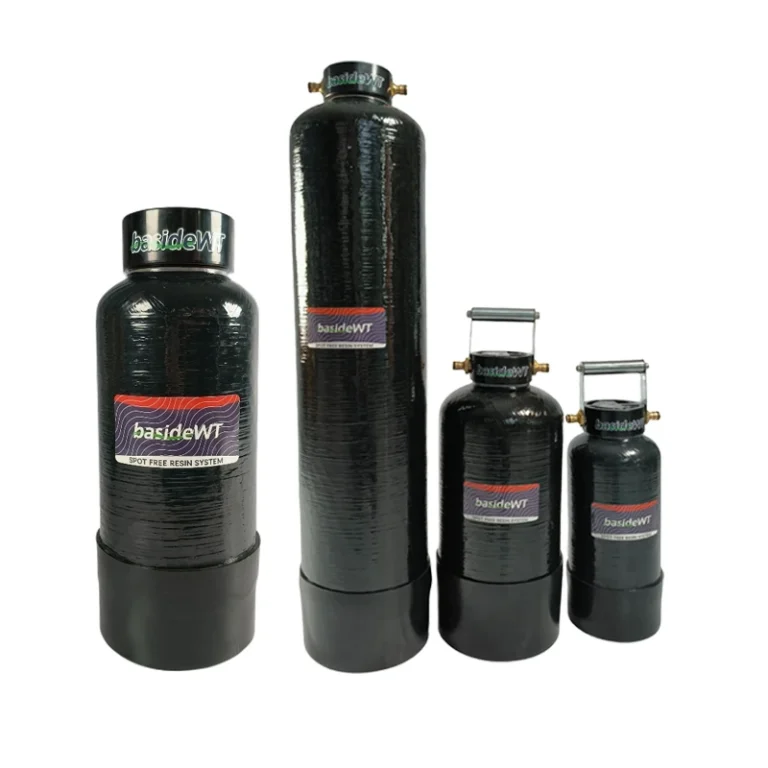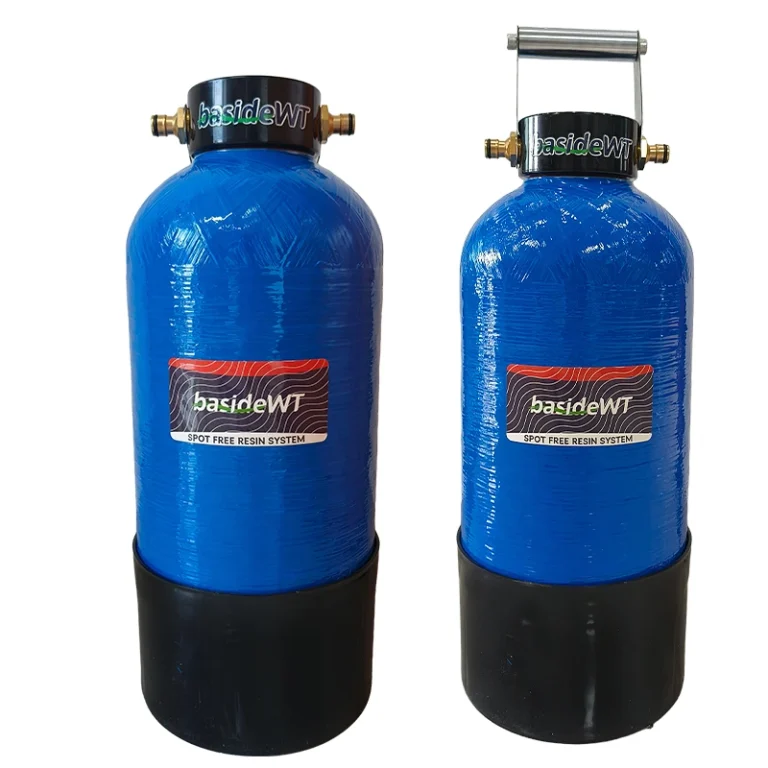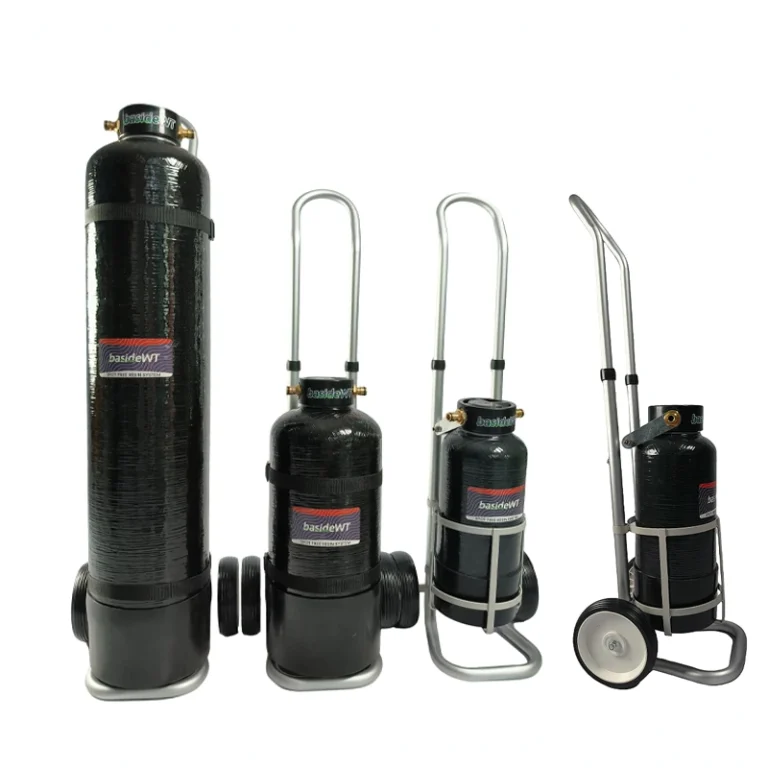BasideWT- Whole Home Water Filtration System & Replacement

BasideWT Deionized Water Spot Free Car Wash System With Resin, Inline TDS Meter
PRODUCT PARAMETERS
- Product Name: Spot Free Car Wash System
- Water Filter Media: Mixed Bed Resin
- Color:Blue/Black
- Cleaning Type: 0 TDS pure water without spot
- Feature: Spotless and No Water Scale
- Accessories: Frp tank , hose,Adaptors,Handle
- Type of Filtration: Deionized (DI) Water Filtration Technology
- Applications: car washes, window cleaning, solar panel maintenance
- Brand: basideWT
- Packing: Standard Exportation Package
Understanding the Enemy: What Are Water Spots and Why Do They Form?
To appreciate the solution, we must first understand the problem. Water spots are not just droplets that have dried up. They are actually hard mineral deposits left behind after water evaporates.
The Science of Hard Water
Your tap water is far from pure. It contains various dissolved solids, collectively known as Total Dissolved Solids (TDS). The primary culprits for spotting are calcium and magnesium ions. When you rinse your car, water beads up on the surface. As these beads evaporate, the minerals they contain do not disappear. Instead, they crystallize onto your paint, glass, and chrome. This creates the white, chalky, or sometimes rainbow-hued rings we know as water spots. The harder your water (meaning the higher its TDS), the worse and faster these spots will form.
The Science of Purity: How a Deionized Water System Works
A Spot Free Car Wash System operates on a brilliantly simple principle: remove the minerals from the water, and you remove the possibility of spots. This is achieved through a process called deionization (DI).
The Magic of Ion Exchange Resin
Inside the BasideWT canister is a bed of highly specialized ion exchange resin. This resin consists of tiny porous beads that are chemically engineered to trap positively and negatively charged ions. As pressurized tap water flows through this resin bed, a swift and silent chemical reaction occurs. The resin beads eagerly grab onto the calcium, magnesium, and other impurity ions in the water. In exchange, they release harmless hydrogen and hydroxyl ions. These then combine to form pure H₂O. The result is water that is virtually free of the minerals that cause spotting.
The Critical Role of the Inline TDS Meter
How do you know the system is working? This is where the inline TDS meter becomes indispensable. This clever device is plumbed into the system’s outlet, providing a real-time digital readout of the water’s purity. Pure water has a TDS of zero. As you use the system, the resin becomes saturated with captured ions and loses its effectiveness. The TDS meter is your early warning system. You will see the number creep up from 0. Interestingly, you can continue to use the water safely until it reaches around 5-10 PPM (parts per million) and still achieve a spot-free rinse. Once it climbs higher, you know it’s time to replace or recharge the resin.
Why Choose the BasideWT Spot Free Car Wash System? Key Features and Benefits
Many brands offer deionization systems, but the BasideWT system is engineered for convenience, durability, and unparalleled results.
Plug and Play Setup for Immediate Use
The BasideWT unit is a self-contained system. It arrives ready for action. The integrated plumbing components make installation a simple, tool-free task. You can connect it directly to your hose bib and your pressure washer or foam cannon in minutes. Its compact design and robust handle make it easy to move from the garage to the driveway. Therefore, you can achieve professional-grade, spot-free results right out of the box.
The Game-Changing “No Towel Dry” Advantage
This is perhaps the most significant benefit. With a traditional wash, the drying towel is a necessity but also a risk. Even the softest microfiber can trap tiny grit and drag it across your paint, creating fine micro-scratches called swirl marks. By using pure deionized water for the final rinse, you eliminate the need to dry the car physically. The water, devoid of minerals, sheets off the vehicle smoothly and evaporates completely without leaving a trace. No spots. No scratches. Just a flawless, air-dried shine.
Real-Time Purity, Guaranteed: Your In-Hand Water Quality Lab
Dedicated handheld TDS (Total Dissolved Solids) meter, putting the power of real-time water quality analysis directly in your hands. This isn’t just a feature—it’s your assurance of a perfect, spot-free finish every time. By providing an instant, digital readout of the water’s purity, you can make data-driven decisions on resin replacement. This proactive approach ensures you never accidentally rinse your vehicle with subpar water, effectively safeguarding your assets against mineral stains. The meter is engineered for precision and reliability, delivering consistent and accurate readings regardless of humidity or temperature fluctuations, which ultimately maximizes the system’s lifespan and your return on investment.
Unmatched Versatility: One System, Infinite Applications
Engineered to be as flexible as your needs are diverse, this system is the ultimate pure water solution. While it delivers a showroom-quality, spot-free rinse for your car, RV, motorcycle, or truck, its utility extends far beyond the garage. It is equally adept at delivering crystal-clear, streak-free results for windows and glass surfaces. Furthermore, it serves as an essential tool for the low-maintenance cleaning of solar panels, where residue-free operation is critical for maintaining energy efficiency. From detailed hobbyist work and commercial cleaning tasks to pet grooming and plant care, this system provides the chemically pure H₂O required for a vast range of household and professional applications.

A Step-by-Step Guide to Your First Spot-Free Wash
Achieving a perfect wash with your BasideWT system is a straightforward process. Follow these steps for guaranteed results.
- Pre-Rinse with Tap Water. Use the bypass valve to set the system to tap water. Rinse the entire vehicle to remove loose dirt and grime.
- Snow Foam and Contact Wash. Apply your favorite car shampoo using a foam cannon. Use the two-bucket method with grit guards to safely wash the paintwork with a microfiber mitt. However, continue to use tap water for this stage.
- The Final Rinse with Deionized Water. This is the crucial step. Turn the bypass valve to direct water through the deionization resin. Thoroughly rinse the entire vehicle from top to bottom, ensuring all soap suds are gone. The water should bead at first but then sheet off in a continuous film.
- Walk Away and Let it Dry. Counterintuitively, you are now done. Do not reach for a towel. Simply move your car into the shade or a garage and let the pure water air-dry. Within minutes, you will witness a perfectly spotless, streak-free finish.
Maintaining Your System for Long-Term Performance
To ensure your Spot Free Car Wash System continues to perform flawlessly, a little simple maintenance is required.
Monitoring and Replacing the Resin
Your inline TDS meter is your best friend here. Keep a regular eye on the reading. When the TDS consistently reads above 10 PPM, it is time for a resin change. BasideWT uses standard mixed-bed DI resin, which is widely available. Replacing it is as simple as unscrewing the canister, pouring out the old, exhausted resin, and filling it with a new bag. The entire process takes less than five minutes.
Q: How does this product achieve a spot-free wash?
A: It all comes down to using purified water for the final rinse. When you wash your car with tap water, dissolved minerals are left behind as the water evaporates, creating spots. Our system solves this by producing 100% pure water with 0 PPM TDS. Because this water contains no minerals, it evaporates completely without leaving any residue. This allows your car to air-dry naturally to a perfect, spot-free finish, eliminating the need for towel drying.
An important note: To achieve this spotless result, your vehicle must be thoroughly cleaned before the final pure water rinse. The pure water prevents new water spots, but it cannot remove existing dirt or grime.
Is a Spot-Free Car Wash System Right for You?
This system is a game-changer for anyone who takes pride in their vehicle’s appearance. It is particularly beneficial for:
- Owners of dark-colored cars that show every flaw.
- People living in areas with very hard water.
- Detailers and enthusiasts seeking a perfect, scratch-free finish.
- Anyone who wants to save time and effort by eliminating the drying step.
FAQs
Choosing the perfect water treatment system depends on your specific water quality, household size, and needs. We make it easy with our 3-step process:
Water quality testing – analyze your water for contaminants, hardness, and other factors.
Personalized Consultation – Our experts recommend systems based on your results, budget, and water usage.
Customized Solution – From whole-house filtration to targeted solutions (e.g., RO for drinking water, softeners for hard water), we tailor the system to your home.
To determine your water flow rate in gallons per minute (GPM), follow these simple steps:
Prepare for Testing:
- Prepare for Testing:
- Ensure all water fixtures in your home are turned off
- Select the faucet closest to your main water supply line (usually the kitchen sink or an outdoor spigot)
- Conduct the Test:
- Fully open the selected faucet
- Time how many seconds it takes to fill a 1-gallon container
- Repeat the test 2-3 times for accuracy
- Calculate Your Flow Rate:
Use this formula: Flow Rate (GPM) = 60 ÷ Fill Time (seconds)Example Calculation:- If your 1-gallon container fills in 15 seconds
- 60 ÷ 15 = 4 GPM
For more precise measurements or whole-home flow rate analysis, contact our water system specialists. We can help you determine if your current flow rate meets the requirements for any water treatment systems you’re considering.

1. Check Multiple Fixtures
Test water pressure at different faucets, showers, and appliances (e.g., kitchen sink, bathroom sink, outdoor hose).
If only one fixture has low pressure, the problem is likely localized (clogged aerator, faulty valve, or pipe issue).
If all fixtures have low pressure, the issue is systemic (main supply, pressure regulator, or water heater).
2. Inspect the Aerator or Showerhead
Unscrew the faucet aerator or showerhead and check for mineral deposits, debris, or rust.
Soak it in vinegar overnight to dissolve buildup, then rinse and reattach.
3. Check the Main Shutoff Valve
Locate the main water shutoff valve (usually near the water meter or where the main line enters the house).
Ensure it’s fully open (turn clockwise to close, counterclockwise to open).
1. Activated Carbon Filters
- Removes:
✅ Chlorine & chloramines
✅ Bad tastes & odors (e.g., sulfur)
✅ Volatile Organic Compounds (VOCs)
✅ Some pesticides & herbicides
❌ Does not remove heavy metals, dissolved minerals, or microbes
2. Reverse Osmosis (RO) Systems
- Removes:
✅ Heavy metals (lead, arsenic, mercury, cadmium)
✅ Dissolved salts (fluoride, nitrates, sulfates)
✅ Microplastics & sediment
✅ Bacteria & viruses (if combined with UV)
✅ Chlorine & chemicals (with carbon pre-filter)
❌ May remove beneficial minerals (can be remineralized)
3. Water Softeners (Ion Exchange)
- Targets:
✅ Calcium & magnesium (hardness)
✅ Low levels of iron & manganese
❌ Does not remove bacteria, chlorine, or heavy metals
4. UV Purifiers
- Kills:
✅ Bacteria (E. coli, coliform)
✅ Viruses (rotavirus, hepatitis)
✅ Protozoa (Giardia, Cryptosporidium)
❌ Does not remove chemicals, metals, or sediment
5. Sediment Filters
- Removes:
✅ Sand, rust, dirt
✅ Large particles & silt
❌ Does not remove dissolved contaminants
6. Whole-House Filtration Systems
Combines multiple methods (carbon + sediment + UV) for broad protection.
- UV: Kills bacteria/viruses but doesn’t remove chemicals or particles.
- RO (Reverse Osmosis): Removes 95–99% of contaminants (heavy metals, dissolved salts) but requires electricity.
- Activated Carbon: Absorbs chlorine, odors, and organic compounds—ideal for pre-filtration.



